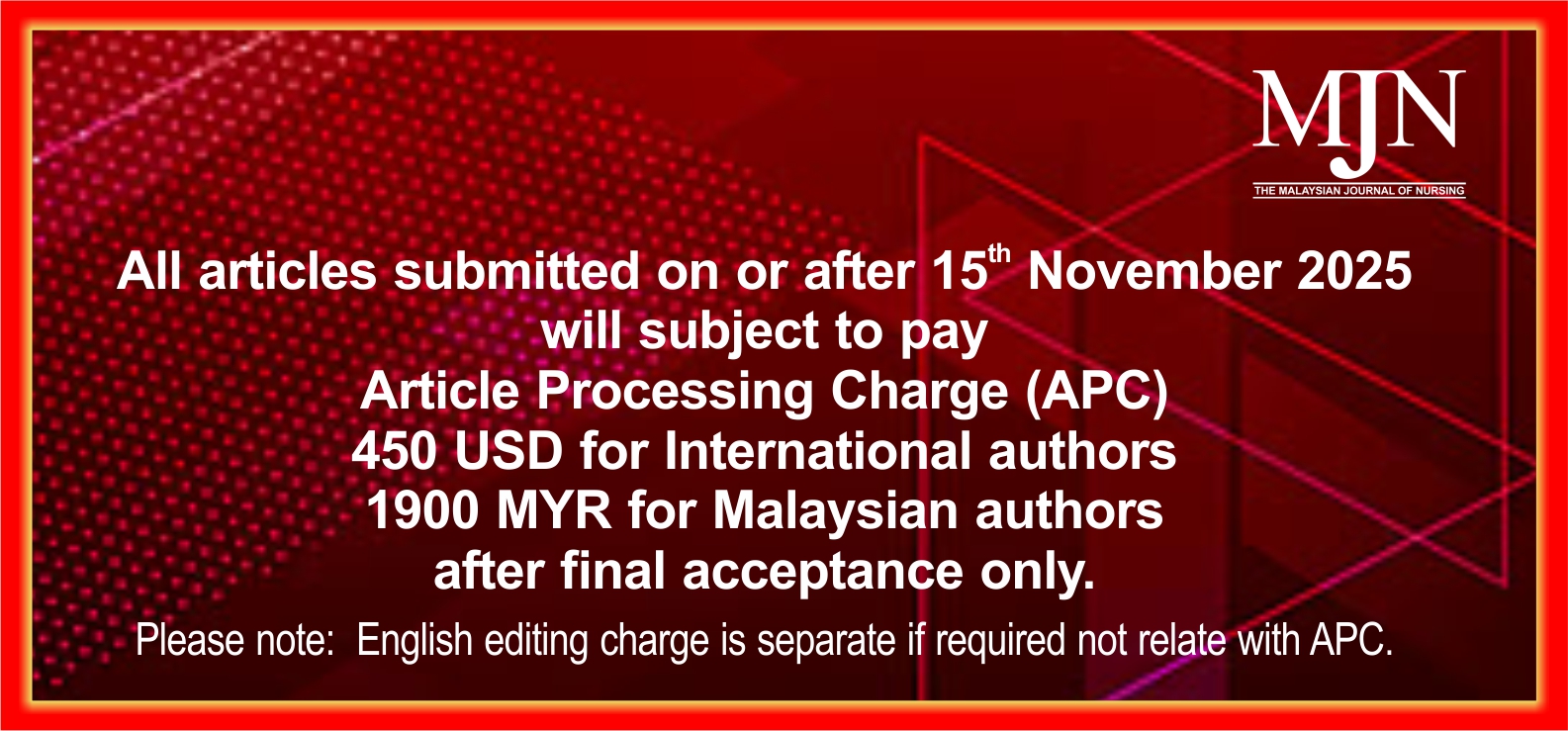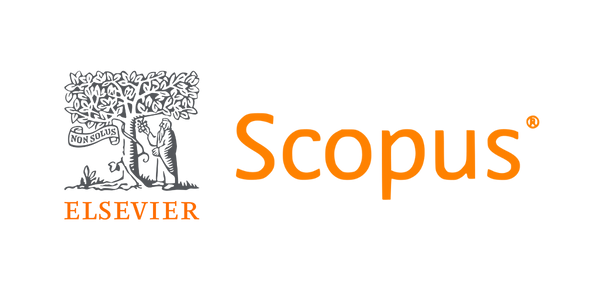Stroke Rehabilitation for Early Physical Activities among Patients Ongoing Rehabilitation: A Meta-Analysis
DOI:
https://doi.org/10.31674/mjn.2024.v16i02.025Abstract
Background: A report from the World Health Organisation says that stroke is the second largest cause of death and the primary reason for impairment in the world. Stroke is a worldwide well-being problem with an incidence of 0.2 to 2.5 per 1000 population. Stroke patients lead to paralysis on one or both sides of the body, causing difficulty in Activities of Daily Living (ADLS) and ambulation. Methods: A search for published materials was conducted from 1990 until 2023 through online sources such as Google Scholar, PubMed, Medline, Cochrane Library, and Embase. The following keywords were combined collectively to identify appropriate study papers. A total of seven studies were included in this study. Results: Higher heterogeneity was evident in the present meta-analysis (p=0.06, I squared=0.59). Prognosis-based outcome analysis showed a substantial difference in the online management system for early physical activity of stroke patients’ continuous rehabilitation. Conclusion: Prognosis-based outcome analysis revealed that there was a significant difference in the online management system for early physical activity of stroke patients in rehabilitation.
Keywords:
Functional Ambulation Category (FAC), Health-Related Quality of Life (HRQoL), High-Intensity Resistance Training (HBR), Spasticity, Stroke RehabilitationDownloads
References
Adamson, J., Beswick, A., & Ebrahim, S. (2004). Is stroke the most common cause of disability? Journal of Stroke and Cerebrovascular Diseases, 13(4), 171-177. https://doi.org/10.1016/j.jstrokecerebrovasdis.2004.06.003
Aoyagi, Y., & Tsubahara, A. (2004). Therapeutic orthosis and electrical stimulation for upper extremity hemiplegia after stroke: A review of effectiveness based on evidence. Topics in Stroke Rehabilitation, 11(3), 9-15. https://doi.org/10.1310/6Q5Q-69PU-NLQ9-AVMR
Bogey, R., & George Hornby, T. (2007). Gait training strategies utilised in poststroke rehabilitation: Are we really making a difference? Topics in Stroke Rehabilitation, 14(6), 1-8. https://doi.org/10.1310/tsr1406-1
Braakhuis, H. E., Roelofs, J. M., Berger, M. A., Ribbers, G. M., Weerdesteyn, V., & Bussmann, J. (2022). Intensity of daily physical activity–a key component for improving physical capacity after minor stroke? Disability and Rehabilitation, 44(13), 3048-3053. https://doi.org/10.1080/09638288.2020.1851781
Brauer, S. G., Kuys, S. S., Paratz, J. D., & Ada, L. (2018). Improving physical activity after stroke via treadmill training and self-management (IMPACT): A protocol for a randomised controlled trial. BMC Neurology, 18(13), 1-8. https://doi.org/10.1186/s12883-018-1015-6
Chae, S. H., Kim, Y., Lee, K. S., & Park, H. S. (2020). Development and clinical evaluation of a web-based upper limb home rehabilitation system using a smartwatch and machine learning model for chronic stroke survivors: prospective comparative study. JMIR mHealth and uHealth, 8(7), e17216. https://doi.org/10.2196/17216
Chang, K. V., Chen, K. H., Chen, Y. H., Lien, W. C., Chang, W. H., Lai, C. L., ... & Han, D. S. (2022). A multicenter study to compare the effectiveness of the inpatient post-acute care program versus traditional rehabilitation for stroke survivors. Scientific Reports, 12(1), 12811. https://doi.org/10.1038/s41598-022-16984-9
Clancy, A., Walton, K., Charlton, K., McMahon, A. T., Williams, P., & Tapsell, L. C. (2022). Development of the Australian National Meal Guidelines for home‐delivered and centre‐based meal programs for older adults. Health Promotion Journal of Australia, 33(1), 194-201. https://doi.org/10.1002/hpja.473
Clarke, D. J., & Holt, J. (2015). Understanding nursing practice in stroke units: A Q-methodological study. Disability and Rehabilitation, 37(20), 1870-1880. https://doi.org/10.3109/09638288.2014.986588
DePaul, V. G., Bosch, J., Oczkowski, W. J., Wishart, L., O’Donnell, M., & Hart, R. G. (2020). Promoting Independent Mobility-related Physical ACTivity (IMPACT) in an inpatient stroke rehabilitation unit: A proof-of-concept evaluation of self-management intervention. Disability and Rehabilitation, 42(22), 3172-3181. https://doi.org/10.1080/09638288.2019.1587012
Erbil, D., Tugba, G., Murat, T. H., Melike, A., Merve, A., Cagla, K., ... & Nigar, D. (2018). Effects of robot‐assisted gait training in chronic stroke patients treated by botulinum toxin‐a: A pivotal study. Physiotherapy Research International, 23(3). https://doi.org/10.1002/pri.1718
Guillaumier, A., McCrabb, S., Spratt, N. J., Pollack, M., Baker, A. L., Magin, P., . . .& Callister, R. (2019). An online intervention for improving stroke survivors’ health-related quality of life: Study protocol for a randomised controlled trial. Trials, 20(1), 1-10. https://doi.org/10.1371/journal.pmed.1003966
Guillaumier, A., Spratt, N. J., Pollack, M., Baker, A., Magin, P., Turner, A., & Levi, C. (2022). Evaluation of an online intervention for improving stroke survivors’ health-related quality of life: A randomised controlled trial. PLoS Medicine, 19(4). https://doi.org/10.1371/journal.pmed.1003966
Janssen, H., Ada, L., Middleton, S., Pollack, M., Nilsson, M., Churilov, L., . . . & McCluskey, A. (2022). Altering the rehabilitation environment to improve stroke survivor activity: A phase II trial. International Journal of Stroke, 17(3), 299-307. https://doi.org/10.1177/17474930211006999
Kayola, G., Mataa, M. M., Asukile, M., Chishimba, L., Chomba, M., Mortel, D., . . . & Saylor, D. (2023). Stroke Rehabilitation in Low-and Middle-Income Countries: Challenges and Opportunities. American Journal of Physical Medicine & Rehabilitation, 102(2S), S24-S32. https://doi.org/10.1097/PHM.0000000000002128
Kuppuswamy, A., Billinger, S., Coupland, K. G., English, C., Kutlubaev, M. A., Moseley, L., ... & Corbett, D. (2024). Mechanisms of post-stroke fatigue: a follow-up from the third stroke recovery and rehabilitation roundtable. Neurorehabilitation and Neural Repair, 38(1), 52-61. https://doi.org/10.1177/15459683231219266
Kwakkel, G., Stinear, C., Essers, B., Munoz-Novoa, M., Branscheidt, M., Cabanas-Valdés, R., . . . & Marque, P. (2023). Motor rehabilitation after stroke: European Stroke Organisation (ESO) consensus-based definition and guiding framework. European Stroke Journal, 8(4), 880-894. https://doi.org/10.1177/23969873231191304
Kylén, M., Ytterberg, C., von Koch, L., & Elf, M. (2022). How is the environment integrated into post‐stroke rehabilitation? A qualitative study among community‐dwelling persons with stroke who receive home rehabilitation in Sweden. Health & Social Care in the Community, 30(5), 1933-1943. https://doi.org/10.1111/hsc.13572
Langhorne, P., Sandercock, P., & Prasad, K. (2009). Evidence-based practice for stroke. The Lancet Neurology, 8(4), 308-309. https://doi.org/10.1016/S1474-4422(09)70060-2
Li, Y., Wang, Q., Liu, X.-L., Hui, R., & Zhang, Y.-P. (2023). Effect of the physical rehabilitation program based on self-care ability in patients with acute ischemic stroke: A quasi-experimental study. Frontiers in Neurology, 14. https://doi.org/10.3389/fneur.2023.1181651
Lin, S., Wang, C., Wang, Q., Xie, S., Tu, Q., Zhang, H., . . .& Redfern, J. (2022). The experience of stroke survivors and caregivers during hospital-to-home transitional care: A qualitative longitudinal study. International Journal of Nursing Studies, 130. https://doi.org/10.1016/j.ijnurstu.2022.104213
Mayo, N. E., Wood-Dauphinee, S., Côté, R., Durcan, L., & Carlton, J. (2002). Activity, participation, and quality of life 6 months poststroke. Archives of Physical Medicine and Rehabilitation, 83(8), 1035-1042. https://doi.org/10.1053/apmr.2002.33984
Meng, X., Chen, X., Liu, Z., & Zhou, L. (2020). Nursing practice in stroke rehabilitation: Perspectives from multi‐disciplinary healthcare professionals. Nursing & Health Sciences, 22(1), 28-37. https://doi.org/10.1111/nhs.12641
Michie, S., Van Stralen, M. M., & West, R. (2011). The behaviour change wheel: a new method for characterising and designing behaviour change interventions. Implementation Science, 6, 1-12. https://doi.org/10.1186/1748-5908-6-42
Monnier, J., Laken, M., & Carter, C. L. (2002). Patient and caregiver interest in internet‐based cancer services. Cancer Practice, 10(6), 305-310. https://doi.org/10.1046/j.1523-5394.2002.106005.x
Neil, H. P. (2023). Stroke Rehabilitation. Critical Care Nursing Clinics, 35(1), 95-99. https://doi.org/10.1016/j.cnc.2022.11.002
Nindorera, F., Nduwimana, I., Sinzakaraye, A., Havyarimana, E., Bleyenheuft, Y., Thonnard, J.-L., & Kossi, O. (2023). Effect of mixed and collective physical activity in chronic stroke rehabilitation: A randomised cross-over trial in low-income settings. Annals of Physical and Rehabilitation Medicine, 66(4). https://doi.org/10.1016/j.rehab.2022.101704
Pang, M. Y., Eng, J. J., Dawson, A. S., & Gylfadóttir, S. (2006). The use of aerobic exercise training in improving aerobic capacity in individuals with stroke: a meta-analysis. Clinical Rehabilitation, 20(2), 97-111. https://doi.org/10.1191/0269215506cr926oa
Paolucci, S., Antonucci, G., Grasso, M. G., Morelli, D., Troisi, E., Coiro, P., & Bragoni, M. (2000). Early versus delayed inpatient stroke rehabilitation: a matched comparison conducted in Italy. Archives of Physical Medicine and Rehabilitation, 81(6), 695-700. https://doi.org/10.1016/S0003-9993(00)90095-9
Pettersen, R., Dahl, T., & Wyller, T. B. (2002). Prediction of long-term functional outcome after stroke rehabilitation. Clinical Rehabilitation, 16(2), 149-159. https://doi.org/10.1191/0269215502cr482oa
Polopalli, S., Yetukuri, A. R., Danduga, R. C. S. R., & Kola, P. K. (2022). A prognostic study on the effect of post-traumatic stress disorder on cerebral ischaemia reperfusion-induced stroke. The World Journal of Biological Psychiatry, 23(2), 136-150. https://doi.org/10.1080/15622975.2021.1935318
Quaglini, S., Cavallini, A., Gerzeli, S., Micieli, G., & Group, G. S. (2004). Economic benefit from clinical practice guideline compliance in stroke patient management. Health Policy, 69(3), 305-315. https://doi.org/10.1016/j.healthpol.2003.12.015
Salgueiro, C., Urrútia, G., & Cabanas-Valdés, R. (2022). Influence of core-stability exercises guided by a telerehabilitation app on trunk performance, balance and gait performance in chronic stroke survivors: A preliminary randomised controlled trial. International Journal of Environmental Research and Public Health, 19(9), 5689. https://doi.org/10.3390/ijerph19095689
Sammut, M., Fini, N., Haracz, K., Nilsson, M., English, C., & Janssen, H. (2022). Increasing time spent engaging in moderate-to-vigorous physical activity by community-dwelling adults following a transient ischemic attack or non-disabling stroke: A systematic review. Disability and Rehabilitation, 44(3), 337-352. https://doi.org/10.1080/09638288.2020.1768599
Shimizu, N., Hashidate, H., Ota, T., & Yatsunami, M. (2020). Daytime physical activity at admission is associated with improvement of gait independence 1 month later in people with subacute stroke: a longitudinal study. Topics in Stroke Rehabilitation, 27(1), 25-32. https://doi.org/10.1080/10749357.2019.1649916
Simpson, D. B., Jose, K., English, C., Gall, S. L., Breslin, M., & Callisaya, M. L. (2022). Factors influencing sedentary time and physical activity early after stroke: A qualitative study. Disability and Rehabilitation, 44(14), 3501-3509. https://doi.org/10.1080/09638288.2020.1867656
Slenders, J. P., de Graaf, J. A., Post, M. W., van Heugten, C. M., Van den Berg-Vos, R. M., Kwa, V. I., & Visser-Meily, J. M. (2024). Participation in daily life activities at two months after stroke predicts long-term health-related quality of life. Topics in Stroke Rehabilitation, 31(1), 11-20. https://doi.org/10.1080/10749357.2023.2202017
Thrasher, T. A., Zivanovic, V., McIlroy, W., & Popovic, M. R. (2008). Rehabilitation of reaching and grasping function in severe hemiplegic patients using functional electrical stimulation therapy. Neurorehabilitation and Neural Repair, 22(6), 706-714. https://doi.org/10.1177/1545968308317436
Tormene, P., Giorgino, T., Quaglini, S. & Stefanelli, M. 2009. Matching incomplete time series with dynamic time warping: An algorithm and an application to post-stroke rehabilitation. Artificial Intelligence in Medicine, 45, 11-34. https://doi.org/10.1016/j.artmed.2008.11.007
Wang, F., Zhang, S., Zhou, F., Zhao, M., & Zhao, H. (2022). Early physical rehabilitation therapy between 24 and 48 h following acute ischemic stroke onset: a randomised controlled trial. Disability and Rehabilitation, 44(15), 3967-3972. https://doi.org/10.1080/09638288.2021.1897168
Wang, W., Jiang, B., Sun, H., Ru, X., Sun, D., Wang, L., . . . & Wang, Y. (2017). Prevalence, incidence, and mortality of stroke in China: results from a nationwide population-based survey of 480 687 adults. Circulation, 135(8), 759-771. https://doi.org/10.1161/CIRCULATIONAHA.116.025250
Williams, L. S., Weinberger, M., Harris, L. E., Clark, D. O., & Biller, J. (1999). Development of a stroke-specific quality of life scale. Stroke, 30(7), 1362-1369. https://doi.org/10.1161/01.STR.30.7.1362
Wu, J.-M., Chen, H.-S., Chen, H.-H., Cheng, B.-W., Huang, C.-W., & Chung, M.-H. (2023). Enhancing patient self-management after a first stroke: An application of the wearable devices and the health management platform. Disability and Health Journal, 16(1). https://doi.org/10.1016/j.dhjo.2022.101392
Wu, S., Yuan, R., Wang, Y., Wei, C., Zhang, S., Yang, X., ... & Liu, M. (2018). Early prediction of malignant brain edema after ischemic stroke: A systematic review and meta-analysis. Stroke, 49(12), 2918-2927. https://doi.org/10.1161/strokeaha.118.022001
Published
How to Cite
Issue
Section
License
Copyright (c) 2024 The Malaysian Journal of Nursing (MJN)

This work is licensed under a Creative Commons Attribution-NonCommercial-NoDerivatives 4.0 International License.



































